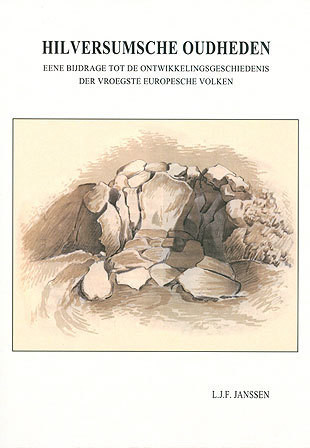Sidestone Press is an academic publishing house founded by scholars, for scholars. As a publisher they have one clear ambition, that is to make scientific information available to all. They believe scientific information should be available at all times, at all places and to each and every one. This means that the printing and selling of books is but one part of what they believe a good publisher should do.
Apart from printed books that can be found in libraries and bookstores around the world, Sidestone books can also be freely accessed online through different channels such as Google Books, Google Scholar and through their own digital ebook library. By offering access to their books for free, more people than ever have access to our publications. First of all this is beneficial for our authors as it greatly increases the exposure of their work, and in effect, the impact of their research. Second, of course, it enables their readers – scholars and students around the world – to access their publications at any time and at any place, including those parts of the world where access to good quality academic libraries is not guaranteed.
From 2012 onwards Sidestone books have been published under one of three different imprints: Sidestone Press Academics, Sidestone Press Dissertations and Sidestone Press.
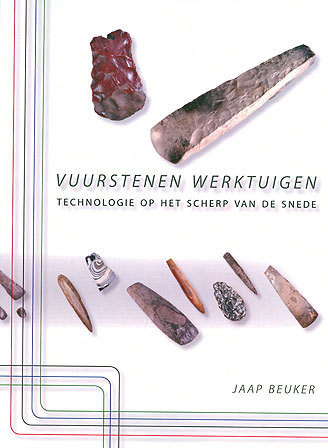
Format: Paperback
Pages: 286
ISBN: 9789088900433
Pub Date: 24 Aug 2010
Illustrations: col illus throughout
Description:
Flint was the primary raw material used for tools until c. 4000 years ago. Its properties allow the production of very sharp edges, which made it essential in many activities related to craft and subsistence.
The fact that flint tools have been used for a long period of time almost everywhere in the world makes them an important source of information in the study of prehistory. Several general questions about this material are of interest to archaeologists: where was the raw material obtained? How can we distinguish between man-made artefacts and natural pieces of flint? What techniques can be used to work flint, and how can we recognise them? How were the different tools used in an effective way? This book tries to answer all of these questions by describing the subsequent stages: acquisition of raw material, flint knapping techniques, recognition of pseudo-artefacts and geofacts, typology of common tool types found in northwestern Europe and discussion of the most effective way to use these tools. The book is richly illustrated with full colour figures. Text in Dutch.
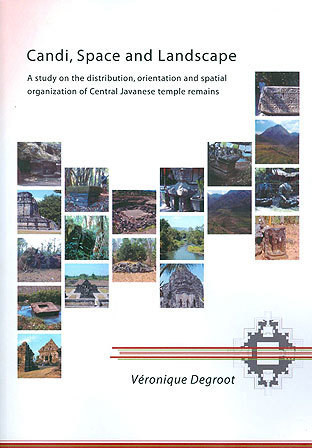
Format: Paperback
Pages: 512
ISBN: 9789088900396
Pub Date: 30 Apr 2010
Description:
Central Javanese temples were not built anywhere and anyhow. On the contrary: their positions within the landscape and their architectural designs were determined by socio-cultural, religious and economic factors. This book explores the correlations between temple distribution, natural surroundings and architectural design to understand how Central Javanese people structured the space around them, and how the religious landscape thus created, developed.
Besides questions related to territory and landscape, Degroot's book analyzes the structure of the built space and its possible relations with conceptualized space, showing the influence of imported Indian concepts, as well as their limits. Going off the beaten track, this book explores the hundreds of small sites that scatter the landscape of Central Java. It is also one of very few studies to apply the methods of spatial archaeology to Central Javanese temples and the first in almost a century to present a descriptive inventory of the remains of this region.
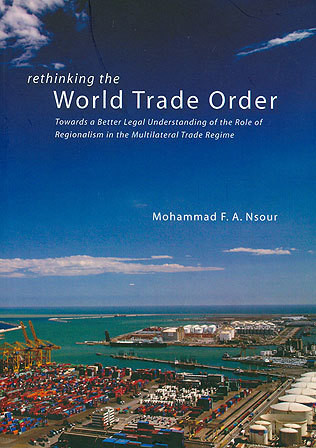
Format: Paperback
Pages: 370
ISBN: 9789088900365
Pub Date: 31 Dec 2009
Description:
Regional Trade Agreements (RTAs) have proliferated at an unprecedented pace since the creation of the World Trade Organization (WTO). Although the WTO legally recognizes countries' entitlement to form RTAs, neither the WTO nor parties to RTAs have an unequivocal understanding of the relationship between the WTO and RTAs. In other words, the legal controversies, the result of uncertainty regarding the application of the WTO/GATT laws, risk undermining the objectives of the multilateral trade system.
This research tackles a phenomenon that is widely believed to be heavily economic and political. It highlights the economic and political aspects of regionalism, but largely concentrates on the legal dimension of regionalism. The main argument of the book is that the first step to achieving harmony between multilateralism and regionalism is the identification of the legal uncertainties that regionalism produces when countries form RTAs without taking into account the substantive and procedural aspect of the applicable WTO/ GATT laws. The book calls for the creation of a legal instrument (i.e. agreement on RTAs) that combines all of the applicable law on RTAs, and simultaneously clarifies the legal language used therein. Likewise, the WTO should have a proactive role, not merely as a coordinator of RTAs, but as a watchdog for the multilateral system that has the power to prosecute violating RTAs. The author is aware that political concerns are top priorities for governments and policy makers when dealing with the regionalism problematic. Hence, legal solutions or proposals are not sufficient to create a better international trade system without the good will of the WTO Members who are, in fact, the players who are striving to craft more regional trade arrangements.
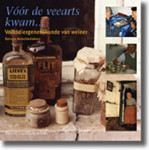
Format: Paperback
Pages: 140
ISBN: 9789088900136
Pub Date: 31 Dec 2009
Description:
A veritable veterinary museum, a large collection of historical objects used in treating animal diseases in the past brought to life with the stories about their use and collection. Farmer Servais Hutschemakers illuminates a lost world. (Dutch text) Volksdiergeneeskunde is een vrijwel verdwenen,en wat geheimzinnige, wereld van praktische oplossingen, kwakzalverij, toverij, geloof en bijgeloof.
Een bijna ontoegankelijke wereld die alleen kan worden betreden door mensen die vertrouwen inboezemen, door intimi. Zon vertrouwens persoon is Servais Hutschemakers, zelf boer geweest en zijn hele leven gefascineerd door het verleden. Hij verzamelde in 20 jaar tijd een unieke collectie gebruiksvoorwerpen die met volksdiergeneeskunde te maken hebben, maar echt uniek zijn de verhalen die met deze voorwerpen verbonden zijn. Die verhalen staan opgetekend in dit boek en lichten een tipje op van de sluier waar achter de geheimzinnige wereld van de volksdiergeneeskunde verborgen ligt.
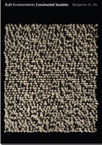
Format: Paperback
Pages: 192
ISBN: 9789088900389
Pub Date: 22 Dec 2009
Description:
Archaeology, as the discipline that searches to explain the development of society by means of material remains, has been avoiding the big issues involved with its research agenda. The topic of social evolution is concealed by anxiety about previous paradigmatic malpractice and the primary archaeological division of the world in culture areas still suffers from the archaic methods by which it was established. Archaeological inference of developing societies is weighed down by its choice of particularism within agency approaches and overtly reductionist due to the prevalence of statistical, classificatory and biological approaches.
This book addresses these issues through a perspective on the spatial analysis of the built environment. As one of the principal properties of our dataset, as well as being the first materialisation of sociality, such spatialities are suggested to be a fundamental key for enabling an understanding of the developing social identity of places, regions and areas. In order to arrive at a truly social inference of spatial datasets, archaeology's usual analysis working from material remains towards socio-cultural interpretations needs to be inverted. The vantage point of this study consists of aprioristic social theory. It constructs its arguments through an epistemological foundation comprising a selection of essential ideas regarding the three constitutive axes of developing societies: time, human action and human space. As it recognises the inherent position of these axes combined in the discipline of human geography, a historical comparison of these two disciplines presents the angle from which plausible theoretical advancements can be made. The core of the book explores selected works of human geographers Allan Pred, Benno Werlen and Andreas Koch against the backdrop of theories like structuration or systems theory, phenomenology, action theory, and to a lesser extent Actor Network Theory and autopoiesis. From this follows its own theoretical proposal called the social positioning of spatialities. On this basis hypotheses for methodological opportunities are discussed, establishing a research agenda. Firmly placing its efforts in current paradigmatic debates in the discipline, this study offers archaeological theorists an incentive to leave the safety of materially bound science and adapt an alternative perspective. It is an attempt to put archaeology back in the forefront of the social theoretical debates it should contribute to.
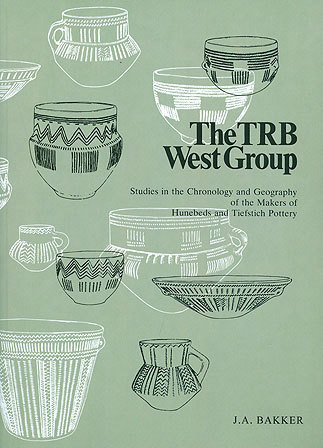
Format: Paperback
Pages: 250
ISBN: 9789088900235
Pub Date: 01 Dec 2009
Description:
A classic study of the pottery of the TRB West group, originally published in 1979. Bakker deals with the research history and typochronology of the TRB pottery. Also he gives a detailed account of the other TRB finds such as flint and stone artefacts and of course the most important TRB sites.
Over the years this book has become a standard-work for anyone who is interested in hunebeds and their makers. The author has written a new introduction to this reprint in which he describes how the book of 1979 came together and the research that has been carried out since then.

Format: Paperback
Pages: 100
ISBN: 9789088900112
Pub Date: 01 Dec 2009
Description:
On November 29th 2007, the Dutch United Nations Student Association (SIB Leiden) organized a Conference, titled: The Future of the European Union: How to Proceed in an Ever Closer Union? The conference was meant to offer students, young academics and professionals the opportunity to engage in a debate with prominent scholars and politicians on the Future of Europe. This book contains an overview of the various issues that were discussed during the conference and attempts to do justice to both the interdisciplinarity of the conference programme and the variety of people who attended.
Therefore, readers will find contributions from both Dutch and international scholars; from young academics from SIB Leiden; and from various politicians and other professionals working daily on European Union issues. As this book offers a collection of essays resulting from a Dutch conference on an international topic, contributions are either in English or in Dutch. The editors have aimed at an equal number of English and Dutch texts. This book does not claim to be exhaustive, nor does it attempt to offer one single vision of the Unions future. Quite the contrary: the conference was meant to explore as many scenarios for the EU as possible, and to put every aspect of the European Union up for discussion. Each of the essays in this book thus explores one such aspect of the EU, and offers the authors view of the road that has been taken, or should be taken. In this way, SIB Leiden sincerely hopes to contribute to a lively and continuing debate. Contents: Voorwoord; M J M Verhagen, The Future of the European Union; H O Ruding, The European Union 2005-2008: crisis, impasse or renewed progress?; A W Bos, Europese Regelzucht; L Siedentop, Some Constitutional Reflections; E H Faber van der Meulen, EU Energy Policy: The conflict between an internal liberalisation agenda and external security of supply; R D Praaning Prawira Adiningrat, The Future of European Security; A M B Chao, De abnormaal lage inschrijving vanuit de positie van de publiekrechtelijke instelling; P J Slot, De Ontwikkeling van het Mededingingsrecht in de EG en Nederland; S P van der Vaart, Er is weer een verhaal nodig bij Europa in de Nederlandse politiek.
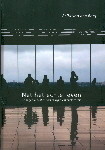
Format: Paperback
Pages: 340
ISBN: 9789088900228
Pub Date: 01 Dec 2009
Description:
Hoe overleven leden van professionele teams in een wereld die gekenmerkt wordt door individualisering, versnelling en winstmaximalisatie? In tegenstelling tot de theorieën in de gangbare managementliteratuur concludeert dit onderzoek, dat de dynamiek in teams in commerciële organisaties vooral beheerst wordt door eigenbelang, angst, bindingsverlies en macht. Daarin onderscheiden deze professionals zich nauwelijks van gewone mensen in het alledaagse leven: Net het echte leven.
Drie teams met een complexe opdracht worden intensief gevolgd. Gedurende dit veldwerk blijkt dat teamprocessen in de onderstroom (meestal genegeerd in de bestaande literatuur, door managers en de teamleden zelf), een vitale rol spelen in het handelen van de individuele teamleden en in de teamprestaties. Machtsposities, uitsluitingsmechanismen, vertrouwensvragen en communicatieproblemen bepalen de effectiviteit van een team sterker dan gewoonlijk wordt gesuggereerd. In een complex proces van ambigue gedragingen, opgevoerde voorstellingen en versluierde belangen verloopt de teamdynamiek weinig rationeel. Uiterst zelden zijn teamleden zich dit expliciet bewust; onzekerheid, irrationeel en illusoir gedrag, eigenbelang en angst zijn nu eenmaal geen processen die gemakkelijk onthuld worden. Doordat zij het belang niet zien, bestaat er in deze door versnelling voortgedreven teams doorgaans weinig animo om hier aandacht aan te besteden. Patronen die in dit onderzoek worden blootgelegd beïnvloeden de effectiviteit van teams èn het werkplezier van de betrokken teamleden in hoge mate. Men kan hier dus maar beter rekening mee houden en op in spelen. Vanuit deze visie presenteert Belia van den Berg nieuwe ideeën voor de aansturing van teams, waarbij ruimte ontstaat om de onderstroom toe te laten en tot nu toe verhulde mechanismen in teamdynamiek te benutten.
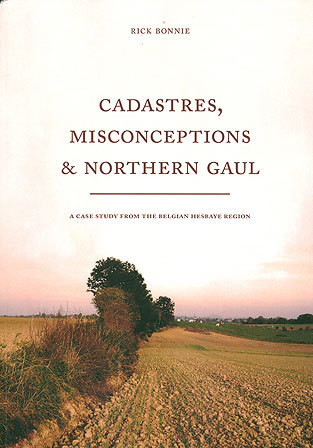
Format: Paperback
Pages: 169
ISBN: 9789088900242
Pub Date: 01 Dec 2009
Description:
A Roman cadastre is a particular form of land allotment which looks like a chequerboard. It was implemented by the Romans in regions throughout the Empire, from Syria to Gaul. Yet, how did a Roman cadastre exactly look like?
What has Roman cadastration in common with centuriatio and parcellation, and what not? Are aerial photographs and maps a reliable source to reveal traces of a Roman cadastre? Did Roman cadastres exist outside the Mediterranean region, and if so, what are the consequences of its existence on a socio-cultural level? Behind these apparently straightforward questions are for most scholars simple definitive answers. On the basis of these answers scholars have regarded the archaeological study of Roman cadastres often as optimistic, biased and even unscientific. In Cadastres, Misconceptions and Northern Gaul Rick Bonnie argues that during the Middle-Roman period a cadastre was implemented by the Romans around the provincial Roman city of Tongres. In contrast to general beliefs, Bonnie demonstrates that it is possible, using aerial photographs and maps, to reconstruct a landscape outside the Mediterranean region that was overlain by a Roman cadastre. It furthermore discusses and examines the history of research, historical and archaeological sources on Roman cadastres, as well as the Roman period of the Belgian Hesbaye region. Rick Bonnie studied Classical Archaeology at Leiden University (MA cum laude 2008). His thesis was awarded the W. A. van Es-prize by the Dutch Institute for Cultural Heritage and was nominated for the Leiden University thesis prize 2007-2008.
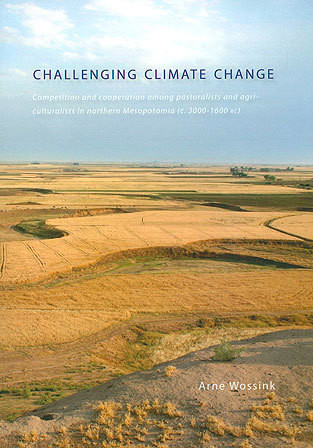
Format: Paperback
Pages: 200
ISBN: 9789088900310
Pub Date: 11 Nov 2009
Description:
Throughout history, climate change has been an important driving force behind human behaviour. This archaeological study seeks to understand the complex interrelations between that behaviour and climatic fluctuations, focussing on how climate affected the social relations between neighbouring communities of occasionally differing nature. It is argued that developments in these relations will fall within a continuum between competition on one end and cooperation on the other.
The adoption of a particular strategy depends on whether that strategy is advantageous to a community in terms of the maintenance of its well-being when faced with adverse climate change. This model will be applied to northern Mesopotamia between 3000 and 1600 BC. Local palaeoclimate proxy records demonstrate that aridity increased significantly during this period. Within this geographical, chronological, and climatic framework, this study looks at changes in settlement patterns as an indication of competition among sedentary agriculturalist communities, and the development of the Amorite ethnic identity as reflecting cooperation among sedentary and more mobile pastoralist communities.
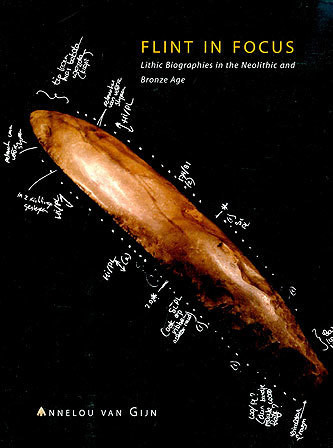
Format: Paperback
Pages: 311
ISBN: 9789088900334
Pub Date: 11 Nov 2009
Description:
The biographies of flint objects reveal their various and changing roles in prehistoric life. Using raw material sourcing, technological analysis, experimental archaeology, microwear and residue studies the author tells the story of flint from the Early Neolithic to its virtual demise in the Late Bronze and Early Iron Age, incorporating data from settlements, burials and hoards from the region of the present-day Netherlands. This richly illustrated book shows the way flint functioned in daily life, how simple domestic tools became ritualized, how flint was used to negotiate change and how the biography of flint objects was related to personhood.
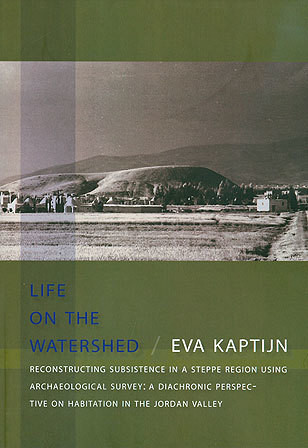
Format: Paperback
Pages: 470
ISBN: 9789088900297
Pub Date: 11 Nov 2009
Description:
The scarcity of water is a major problem in many parts of the Near East today and has been so in the past. To survive in such a region people should be able to structurally attain more water than rainfall alone can supply. The archaeology of this area should not only identify when people inhabited such a region and what the character of this habitation was, but also how people were able to survive in such a region and why they chose to live there in the first place.
In this book these questions have been studied for the Zerqa Triangle; a region in the middle Jordan Valley around Tell Deir 'Alla (Jordan). By means of a detailed pedestrian archaeological survey the intensity of habitation of the region from the Neolithic to early modern periods is investigated. Efforts have been undertaken to reconstruct the agricultural practices in the various periods and simultaneously the means by which the different communities were able to practice agriculture; in other words, how did they irrigate the land? By focussing on the different social responses of communities, conclusions have been drawn on how and why people managed to create a living in this arid, but potentially very fertile region. This book not only contributes to the ongoing discussion of the archaeology of marginal areas, but also provides a huge amount of new data on the archaeology of the Jordan Valley, both in the form of newly discovered settlement sites from several different periods as well as remains from several more inconspicuous types of human activity present in the countryside.
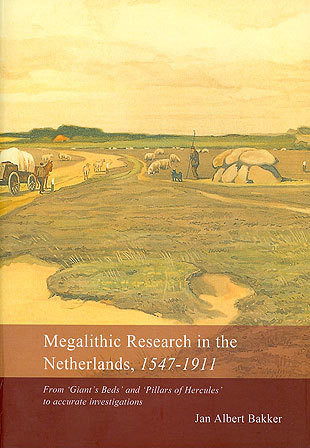
Format: Paperback
Pages: 175
ISBN: 9789088900341
Pub Date: 11 Nov 2009
Description:
This book contains a detailed account of the earliest research carried out on the Dutch megalithic tombs. Dating from the Middle Neolithic these Stone Age monuments have continually triggered people's imagination. The earliest theories about their origin involved mythical creatures such as giants and witches.
This richly illustrated book tracks the different ideas and theories through time and is a treasure for all those interested in Stone Age monuments and the history of Archaeology as a discipline. Contains a complete catalogue of all Dutch megalithic tombs and a summary and an appendix in German.
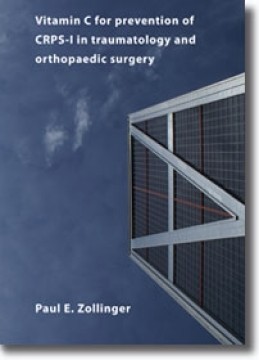
Format: Paperback
Pages: 176
ISBN: 9789088900099
Pub Date: 31 Dec 2008
Description:
Complex regional pain syndrome type I (CRPS-I), formerly known as Reflex Sympathetic Dystrophy, can occur after a trauma to an arm or leg. CRPS is frequently seen after wrist fractures. The diagnosis of CRPS is based on clinical signs and symptoms.
According to Veldman et al. it is characterized by unexplained diffuse pain, differences in skin colour and temperature relative to the other limb, diffuse oedema, and limited active range of motion. These signs and symptoms occur or increase after use and are present in an area larger than the area of primary trauma. CRPS is one of the most important causes of invalidation after an injury to an extremity and the therapy is difficult, time consuming and costly. When it occurs it has a devastating impact on the patient in personal, social and economic view. The emphasis of treatment should therefore be on prevention. This thesis, by orthopaedic surgeon Paul Zollinger, gives an overview of the evidence-based therapy of CRPS in an outline of the Dutch clinical practice guideline Complex regional pain syndrome type I. A general exposé on the chemical, pharmacodynamic and clinical aspects of vitamin C (ascorbic acid) is presented. In two placebo-controlled randomized clinical trials Zollinger et al. show that 500 mg vitamin C daily, reduces the chance for the occurrence of CRPS after wrist fractures. In addition, this application of vitamin C is proposed in hand surgery as well. An alphabetical list of the relevant literature and summaries in English, Dutch and German complete this book on CRPS, which may be of interest for a variety of health care professionals (general practitioners, physiotherapists, trauma and orthopaedic surgeons, etc.).
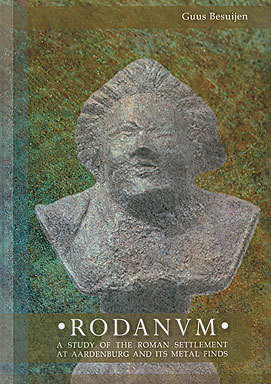
Format: Paperback
Pages: 180
ISBN: 9789088900167
Pub Date: 01 Dec 2008
Description:
Beneath the surface of Aardenburg, a small town in the south-western part of the Netherlands, lie the remains of a Roman settlement that is presumed to have been named Rodanum. Extensive archaeological excavations from the late 1950s to the late 1980s revealed that the settlement was similar in size or even larger than the modern town. Its centre was formed by a large castellum-type fortification wall that enclosed several large stone buildings.
The settlement was connected to the sea by a natural watercourse that defined its economic and logistical importance in the region. Rodanum's military function was to secure the regional coast against attacks by Germanic tribes via the North Sea, which occurred around AD 175. It continued to be inhabited until the late third century or the beginning of the fourth century, after which the settlement was deserted until the early Middle Ages. The first part of this study provides an overview of Aardenburg during the Roman period, in which its economic and military functions within the region are explored. In particular, the military and civilian character of the town is discussed. The second part contains a study of the metal objects and aims to present significant additional information. This part concludes with a critical review of the current state of research at this site.











